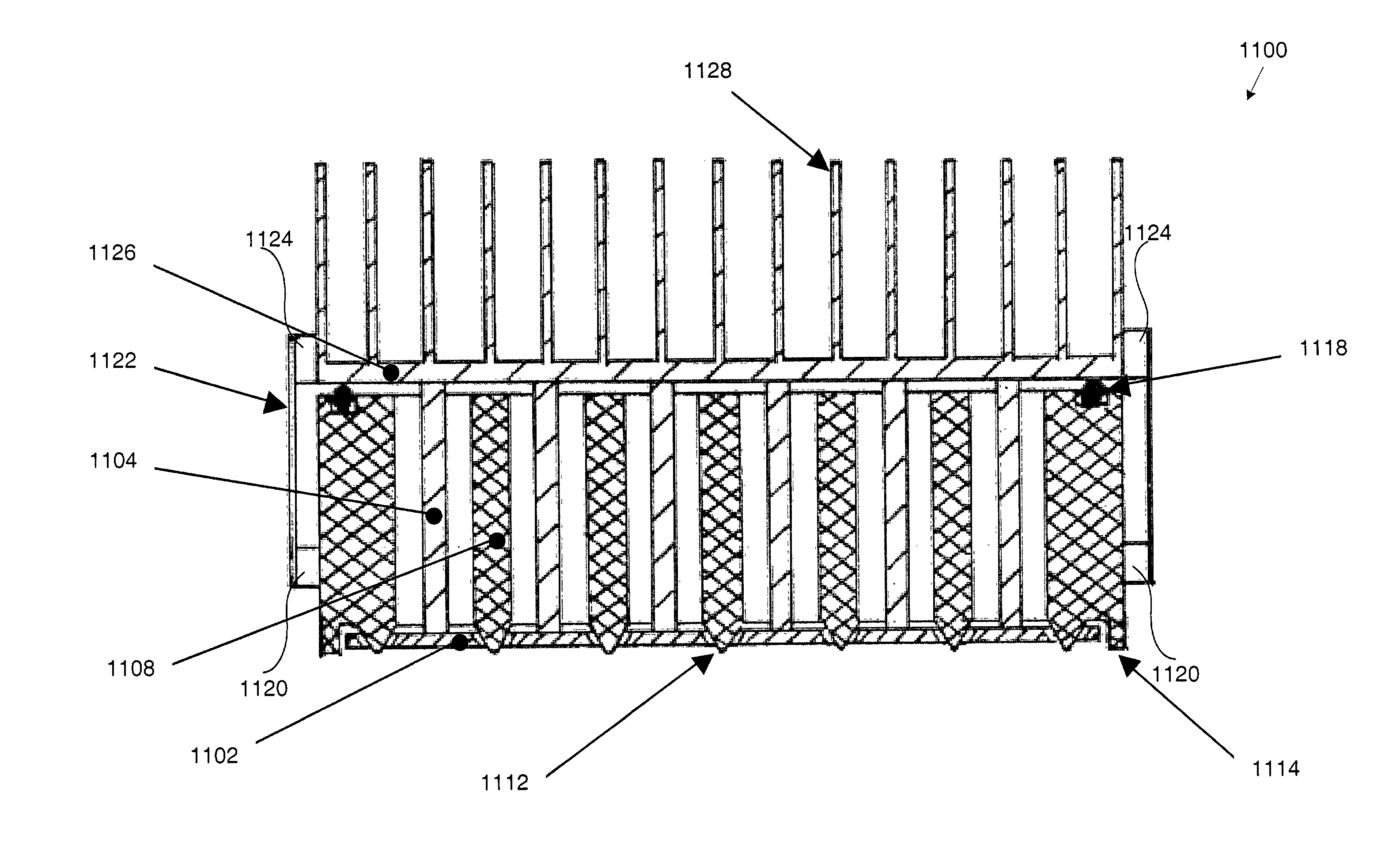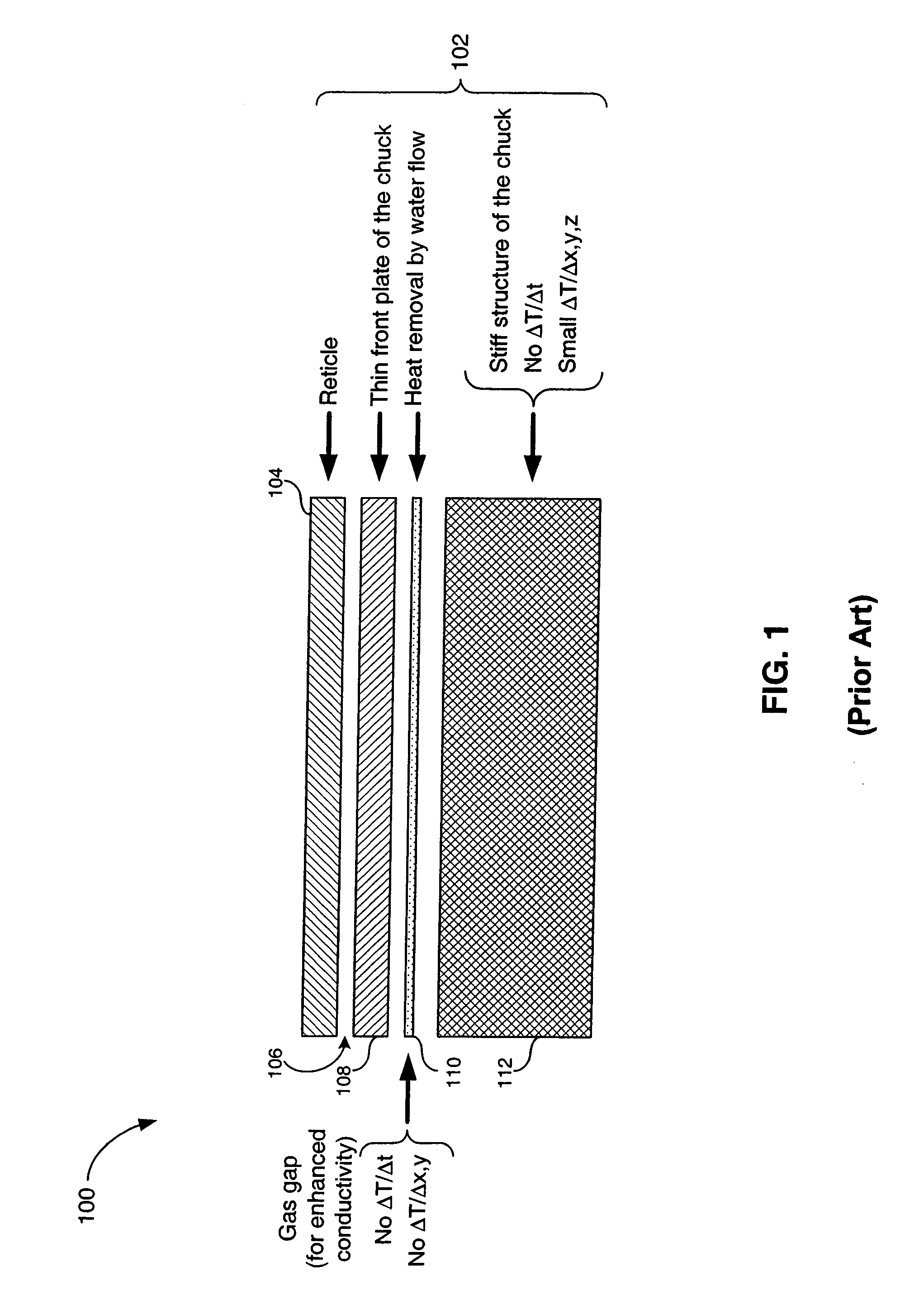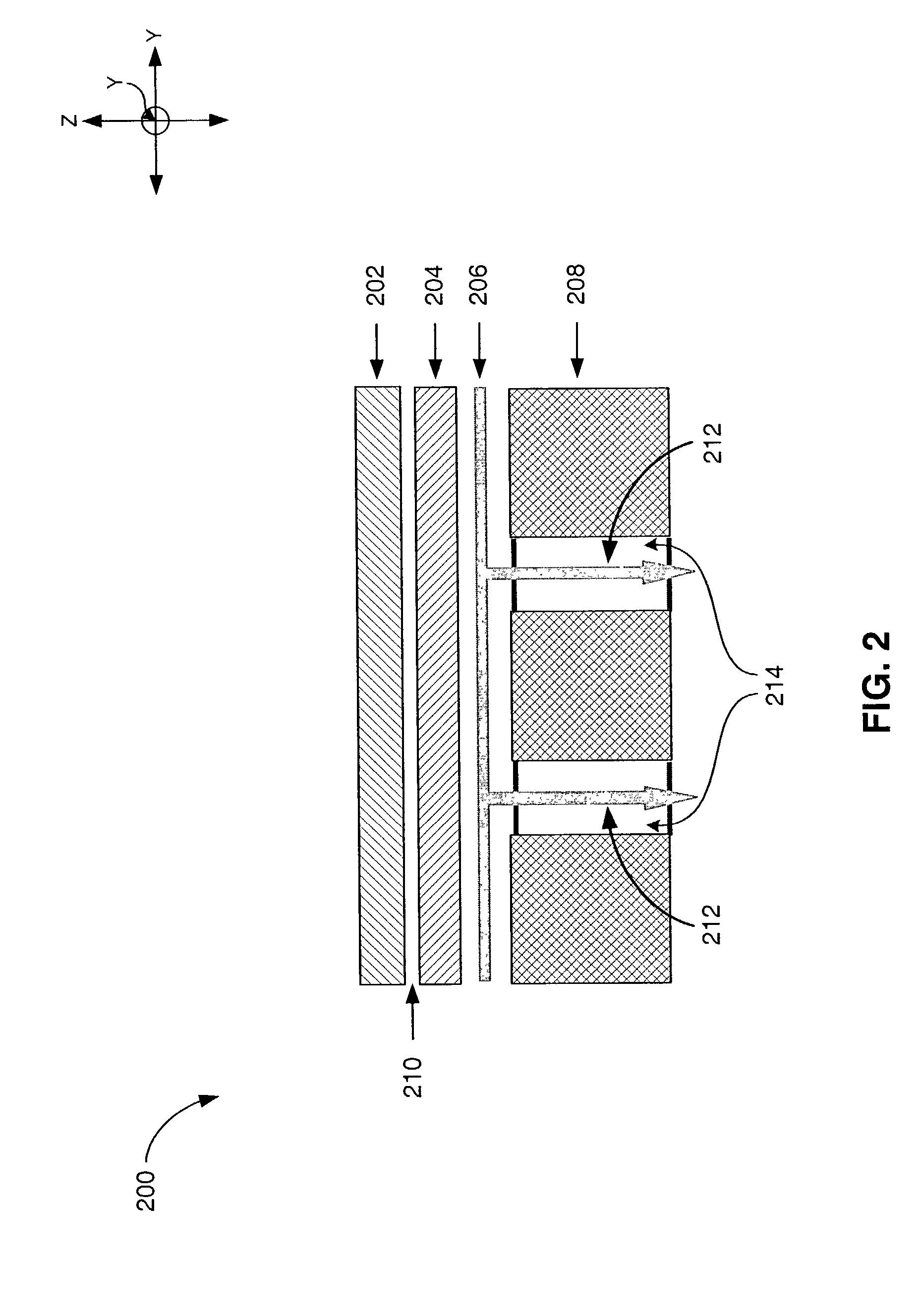Method and apparatus for cooling a reticle during lithographic exposure
a technology of lithographic exposure and cooling reticle, which is applied in the direction of moving conduit heat exchangers, radiation therapy, printers, etc., can solve the problems of reducing pattern positioning accuracy, thermal distortion is greater, and all the devices on the wafer are unusabl
- Summary
- Abstract
- Description
- Claims
- Application Information
AI Technical Summary
Benefits of technology
Problems solved by technology
Method used
Image
Examples
Embodiment Construction
Overview
[0050]Throughout the specification, a reticle is described as the element being cooled by the systems and methods according to the embodiments of the present invention. It is to be appreciated that the systems and methods can function to cool a wafer held to a short stroke wafer stage while the wafer is being exposed. This is done in the same way the systems and methods cool the reticle held to a short stroke reticle stage being used for exposure. Thus, throughout the specification the term reticle can be interchanged with the terms wafer or substrate without departing from the invention. Merely for convenience, most of the description of the systems and methods of the present invention will refer to a reticle.
[0051]Systems and methods of the various embodiments make it unnecessary to circulate a coolant within a short stroke stage. This eliminates vibrations produced by coolant fluid flow through the short stroke stage. Vibrations are detrimental to lithographic performance...
PUM
| Property | Measurement | Unit |
|---|---|---|
| power | aaaaa | aaaaa |
| temperature | aaaaa | aaaaa |
| distance | aaaaa | aaaaa |
Abstract
Description
Claims
Application Information
 Login to View More
Login to View More - R&D
- Intellectual Property
- Life Sciences
- Materials
- Tech Scout
- Unparalleled Data Quality
- Higher Quality Content
- 60% Fewer Hallucinations
Browse by: Latest US Patents, China's latest patents, Technical Efficacy Thesaurus, Application Domain, Technology Topic, Popular Technical Reports.
© 2025 PatSnap. All rights reserved.Legal|Privacy policy|Modern Slavery Act Transparency Statement|Sitemap|About US| Contact US: help@patsnap.com



